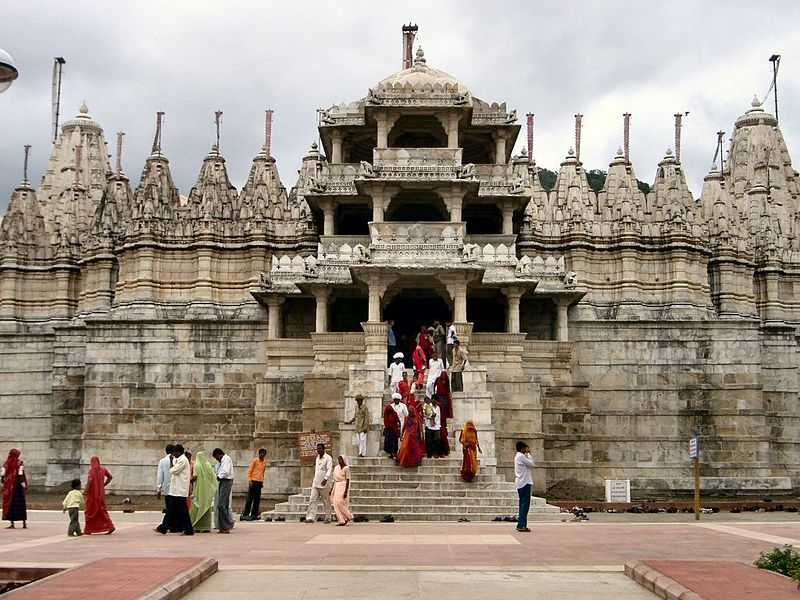Settled in the lush green hills of Mount Abu, the Dilwara Temples stand as an epitome of architectural grandeur and spiritual significance. These Jain temples, built between the 11th and 13th centuries, are renowned for their stunning marble carvings, intricate detailing, and rich heritage. Considered one of the most beautiful Jain temples in India, the Dilwara Temples attract both devotees and tourists who marvel at their splendor and craftsmanship.
Historical Overview of Dilwara Temples
The Dilwara Jain Temples were constructed under the patronage of various Chalukya rulers, with the first temple being commissioned by Vimal Shah in 1031 AD. Over the years, different temples were added, each contributing to the complex’s architectural brilliance. The temples primarily serve as a place of worship for the followers of Jainism, but their historical and artistic significance transcends religious boundaries.
Exquisite Marble Carvings: A Feast for the Eyes
One cannot speak of the Dilwara Temples without emphasizing their exquisite marble carvings. Crafted with unmatched precision, every inch of the temples is adorned with intricate designs depicting scenes from Jain mythology, floral patterns, and more. The carvings are so detailed that they often give the impression of fine lace rather than solid stone. This artistry has made the Dilwara Temples a benchmark of Indian craftsmanship.
The Five Temples of the Dilwara Complex
The Dilwara complex consists of five temples, each with its unique features and architectural highlights. Let us explore these magnificent temples one by one:
1. Vimal Vasahi Temple
Vimal Vasahi Temple is the oldest and the most prominent temple in the complex, dedicated to Lord Adinath, the first Tirthankara of Jainism. Built by Vimal Shah, a minister of the Solanki dynasty, this temple is known for its elaborate ceilings and intricately carved pillars. The main hall, called the Gudu Mandapa, features an array of sculptures depicting dancing figures, religious motifs, and decorative motifs.
The temple’s Navchowki, a collection of nine intricately carved ceilings, stands as a testament to the skill of ancient artisans. Each ceiling has a distinct design, leaving visitors in awe of its artistic beauty.
2. Luna Vasahi Temple
Dedicated to the 22nd Tirthankara, Lord Neminath, the Luna Vasahi Temple was built in 1230 AD by two Porwad brothers, Tejpal and Vastupal, who served as ministers in the Vaghela dynasty. This temple is renowned for its Ranga Mandapa, or assembly hall, which features a beautiful central dome adorned with stunningly detailed carvings.
The Luna Vasahi Temple also boasts a Hathishala (Elephant Courtyard) with intricately carved statues of elephants that seem almost lifelike. The marble sculptures in this temple showcase unparalleled craftsmanship, and every inch of the structure resonates with divine beauty.
3. Pittalhar Temple
Constructed by Bhima Shah, a minister of Sultan Begada of Gujarat, the Pittalhar Temple is dedicated to Lord Rishabhdev (Adinath). The main idol, made of pittal (brass), is a significant highlight of this temple, which is why it is popularly known as the Pittalhar Temple.
The sanctum houses several smaller idols, and the entire temple exudes simplicity with an emphasis on religious devotion. The architectural elements reflect a subtle yet elegant design, making it an important addition to the Dilwara complex.
4. Parshvanatha Temple
The Parshvanatha Temple is the tallest structure among the Dilwara Temples and is dedicated to Lord Parshvanath, the 23rd Tirthankara. Constructed in the 15th century, it features intricate carvings on its outer walls, depicting various scenes from Jain mythology.
The temple’s mandapa is supported by beautifully carved pillars, and the ceilings feature concentric rings adorned with carvings of celestial beings, musicians, and dancers. The intricate detailing here showcases the exceptional skill and dedication of the artisans who worked on the structure.
5. Mahavir Swami Temple
The smallest of the five temples, the Mahavir Swami Temple is dedicated to Lord Mahavir, the 24th Tirthankara. Built in 1582, the temple features elaborate paintings and intricate carvings, making it a charming addition to the Dilwara complex. Despite its modest size, the Mahavir Swami Temple holds great significance for the Jain community and is a fine example of architectural elegance.
Architectural Marvels of the Dilwara Temples
The Dilwara Temples are not only places of worship but also living embodiments of India’s rich heritage and architectural prowess. The temples’ roofs, pillars, doorways, and mandapas are decorated with intricate carvings and sculptures, with marble being the primary material used throughout the complex. The attention to detail in every carving and sculpture is unparalleled, leaving visitors in awe of the sheer artistry and dedication of the craftsmen.
Unique Features That Set Dilwara Apart
- Floral Patterns and Ornamental Designs: The Dilwara Temples are adorned with delicate floral patterns and ornamental designs that enhance the aesthetic appeal of the marble structures. The intricate carvings represent not just artistic creativity but also convey spiritual symbolism.
- Harmonious Integration with Nature: Nestled amidst the green hills of Mount Abu, the temples blend harmoniously with their natural surroundings. This unique setting enhances the spiritual experience for devotees and visitors alike.
- Historical Frescoes and Paintings: The Mahavir Swami Temple features ancient frescoes that depict scenes from Jain mythology. These frescoes have been meticulously preserved, offering a glimpse into the artistic traditions of the time.
Best Time to Visit the Dilwara Temples
The Dilwara Temples can be visited throughout the year, but the best time to explore these architectural marvels is during the cooler months, from October to March. The weather during this period is pleasant, making it ideal for sightseeing and enjoying the serene beauty of Mount Abu.
Photography and Preservation
Photography is not permitted inside the temple complex to preserve its sanctity and prevent damage to the delicate carvings and frescoes. Visitors are encouraged to respect the rules and maintain the peaceful atmosphere of this sacred site.
How to Reach Dilwara Temples
- By Air: The nearest airport to Mount Abu is Maharana Pratap Airport in Udaipur, approximately 185 km away.
- By Train: Abu Road Railway Station, about 28 km from Mount Abu, is the closest railway station.
- By Road: Mount Abu is well-connected by road to major cities like Udaipur, Ahmedabad, and Jaipur. Regular buses and taxis are available.
Conclusion
The Dilwara Temples of Mount Abu are a testament to the architectural brilliance and spiritual heritage of India. Their intricate marble carvings, historical significance, and serene location make them a must-visit for history buffs, art lovers, and spiritual seekers alike. A visit to these temples is a journey back in time, offering a deeper understanding of India’s rich cultural and spiritual legacy.




